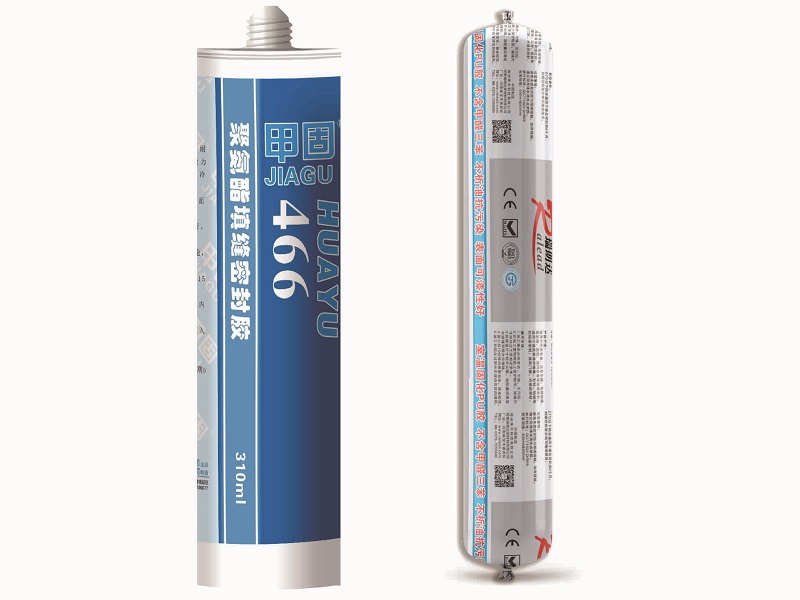Polyurethane sealant is a sealant mainly composed of polyurethane rubber and polyurethane prepolymer. This type of sealant has high tensile strength, excellent elasticity, wear resistance, oil resistance, and cold resistance, but its water resistance, especially alkali water resistance, is poor. It can be divided into three types: heating vulcanization type, room temperature vulcanization type, and hot melt type, among which room temperature vulcanization type has single component and two-component types.
& nbsp; & nbsp; & nbsp; Polyurethane sealant is a sealant mainly composed of polyurethane rubber and polyurethane prepolymer. This type of sealant has high tensile strength, excellent elasticity, wear resistance, oil resistance, and cold resistance, but its water resistance, especially alkali water resistance, is poor. It can be divided into three types: heating vulcanization type, room temperature vulcanization type, and hot melt type, among which room temperature vulcanization type has single component and two-component types< br />
Polyurethane sealant is a sealant mainly composed of polyurethane rubber and polyurethane prepolymer. This type of sealant has high tensile strength, excellent elasticity, wear resistance, oil resistance, and cold resistance, but its water resistance, especially alkali water resistance, is poor. It can be divided into three types: heating vulcanization type, room temperature vulcanization type, and hot melt type, among which room temperature vulcanization type has single component and two-component types.

Polyurethane sealant is a sealant mainly composed of polyurethane rubber and polyurethane prepolymer. This type of sealant has high tensile strength, excellent elasticity, wear resistance, oil resistance, and cold resistance, but its water resistance, especially alkali water resistance, is poor. It can be divided into three types: heating vulcanization type, room temperature vulcanization type, and hot melt type, among which room temperature vulcanization type has single component and two-component types< br />
Polyurethane sealant is widely used as a joint sealing material in buildings, squares, highways, as well as in automobile manufacturing, glass installation, electronic filling, submarine and rocket sealing.
nine hundred and one
Polyurethane sealant has the following characteristics: excellent wear resistance, low tenderness and softness, wide adjustable performance range, high mechanical strength, good adhesion, good elasticity, and excellent recovery. It is suitable for dynamic joints, has good weather resistance, a service life of up to 15-20 years, excellent oil resistance, good biological aging resistance, and moderate price< br />
However, polyurethane sealant also has some disadvantages, such as: it cannot withstand heat for a long time, light colored formulas are prone to UV aging, the storage stability of single component adhesives is greatly affected by packaging and external factors, usually curing slowly, and bubbles and cracks may occur in high-temperature environments< br />
Polyurethane sealant is a sealant mainly composed of polyurethane rubber and polyurethane prepolymer. This type of sealant has high tensile strength, excellent elasticity, wear resistance, oil resistance, and cold resistance, but its water resistance, especially alkali water resistance, is poor. It can be divided into three types: heating vulcanization type, room temperature vulcanization type, and hot melt type, among which room temperature vulcanization type has single component and two-component types.
nine hundred and two
Polyurethane sealant is widely used as a joint sealing material in buildings, squares, highways, as well as in automobile manufacturing, glass installation, electronic filling, submarine and rocket sealing< br />
Polyurethane sealant has the following characteristics: excellent wear resistance, low tenderness and softness, wide adjustable performance range, high mechanical strength, good adhesion, good elasticity, and excellent recovery. It is suitable for dynamic joints, has good weather resistance, a service life of up to 15-20 years, excellent oil resistance, good biological aging resistance, and moderate price< br />
However, polyurethane sealant also has some disadvantages, such as: it cannot withstand heat for a long time, light colored formulas are prone to UV aging, the storage stability of single component adhesives is greatly affected by packaging and external factors, usually curing slowly, and bubbles and cracks may occur in high-temperature environments.

 豫公網(wǎng)安備41042102000091號(hào)
豫公網(wǎng)安備41042102000091號(hào)
 豫ICP備14028033號(hào)
豫ICP備14028033號(hào)